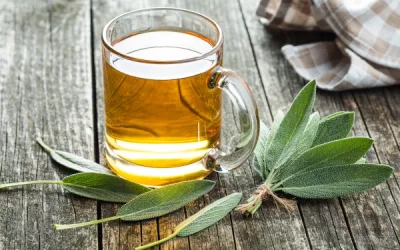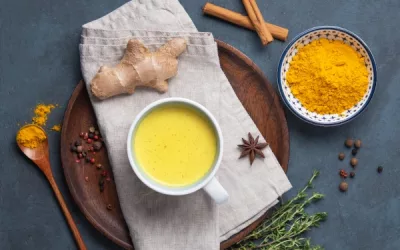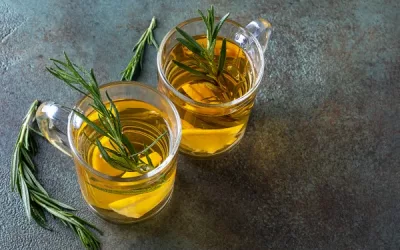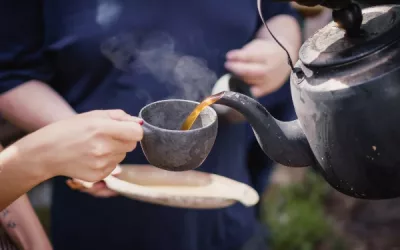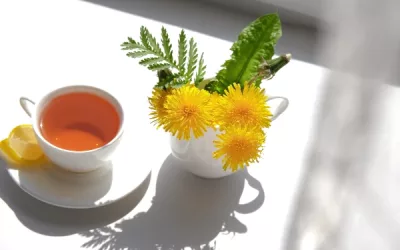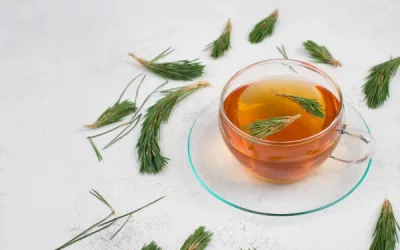Have you ever wondered how a simple tea can unlock a world of wellness? Linden tea, cherished for its soothing properties and rich history, offers more than just a delightful sip. As health-conscious individuals increasingly seek natural remedies, understanding the benefits, preparation methods, and safety of linden tea becomes essential. In this guide, we’ll explore everything you need to know about linden tea—from its incredible health benefits to tips on where to find the best quality. Let’s dive into this holistic beverage that could transform your health routine!
During the 19th century, linden tea gained popularity in Europe as a remedy for various ailments. In particular, it was used to treat soldiers’ wounds and relieve anxiety. One notable story comes from the Crimean War, where Florence Nightingale, a pioneering nurse, used it to help calm soldiers suffering from the trauma of battle.
The tea’s soothing properties provided comfort in an otherwise harsh and stressful environment, highlighting its long-standing use in holistic health practices.
I remember the first time I tried this tea. I had been having a particularly stressful week at work, and a friend recommended this herbal remedy. Reluctantly, I brewed a cup, not expecting much.
The first sip was surprisingly comforting. It was like a warm hug in a cup. Over the next few days, it became a nightly ritual. I found it easier to unwind, and my sleep improved significantly.
Now, it’s a staple in my pantry, and I often turn to it whenever I need a moment of calm or relief from a headache. It’s fascinating how a simple cup of tea can make such a difference.
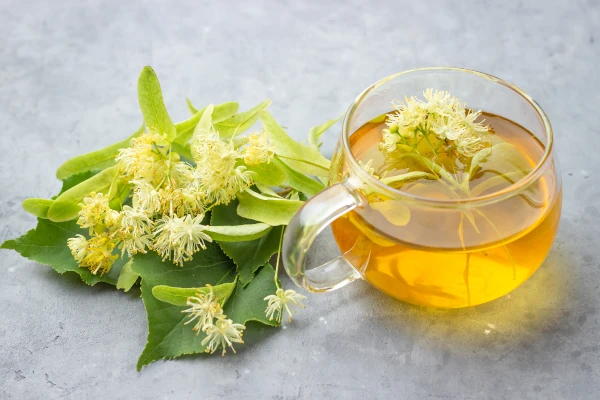
How do you prepare linden tea effectively?
Linden tea is a wonderful herbal drink known for its calming and health-boosting properties. Preparing this tea the right way ensures you get the best flavour and benefits. Below, I’ll provide a detailed table outlining the optimal steeping times, water temperatures, and quantities of linden to use for making a perfect cup of linden tea.
To use the table, find the preparation method that suits your needs. Each row provides specific details on how long to steep the tea, the temperature of the water, and how much linden to use.
| Preparation Method | Steeping Time | Water Temperature | Quantity of Linden |
|---|---|---|---|
| Traditional Hot Brew | 5-10 minutes | 90°C-95°C | 1-2 teaspoons |
| Cold Brew | 6-12 hours | Room Temperature | 2-3 tablespoons |
| Sun Tea | 2-3 hours | Sunlight | 2-3 tablespoons |
| Short Steep | 3-5 minutes | 80°C-85°C | 1 teaspoon |
| Long Steep for Strength | 15-20 minutes | 95°C | 2 teaspoons |
| Quick Microwave Steep | 2-3 minutes | Microwave (High) | 1 teaspoon |
| Blended Herbal Brew | 5-10 minutes | 90°C-95°C | 1 teaspoon linden + 1 teaspoon other herbs |
Traditional hot brew
The traditional hot brew method is simple and popular. It produces a robust flavour and allows you to savour the full benefits of the linden flower.
- Boil water to 90°C-95°C.
- Add 1-2 teaspoons of dried linden flowers to a teapot or infuser.
- Pour the hot water over the flowers.
- Let it steep for 5-10 minutes.
This method works great for a relaxing evening drink. You can also mix linden with other herbs like chamomile or mint for a unique taste.
Cold brew
Cold brewing is a refreshing way to enjoy linden tea, especially during hot weather. This method brings out a different set of flavours.
- Fill a jar or pitcher with room temperature water.
- Add 2-3 tablespoons of dried linden flowers.
- Refrigerate for 6-12 hours.
This method is perfect if you prefer a milder flavour and want to prepare your tea in advance. It’s ideal for making large batches.
Short steep
The short steep method is quick and convenient for those in a hurry. It still retains some of the calming properties of linden tea.
- Heat water to 80°C-85°C.
- Add 1 teaspoon of dried linden flowers to a cup or infuser.
- Steep for 3-5 minutes.
This technique is great for a quick morning or midday drink. You can use this method when blending with other herbs like lemon balm or lavender.
In the early 1900s, during World War I, soldiers used linden tea as a natural remedy to combat stress and anxiety. The calming effects of the tea provided some relief from the harsh conditions of the trenches.
Brewed from the flowers of the linden tree, it became a staple in many soldiers’ daily routines. The linden tree itself, known for its longevity and resilience, symbolised hope and endurance during those challenging times.
Is linden tea safe for everyone to consume?
So, you want to know if linden tea is as harmless as it tastes, right? The short answer is: mostly, but there are a few catches. Let’s dive into this fragrant world of linden flowers and see who gets along with them and who should steer clear.
First off, it’s celebrated for its calming effects, often sipped to reduce anxiety, relieve stress, and aid in sleep. But like that one overly-friendly neighbour, it might not vibe well with everyone.
What are the potential side effects of linden tea?
Look, drinking linden tea won’t usually kick you in the gut, but it may cause some mild mischief in certain folk. It can:
- Cause drowsiness: Perfect for bedtime, not so much for driving.
- Trigger allergic reactions: If you’re allergic to flowery things, beware the linden.
- Act as a diuretic: Meaning more frequent trips to the loo.
- Upset your tummy: Rare but possible, especially if consumed in large quantities.
- Lower blood pressure: Not a problem unless you already have low pressure or are taking meds for blood pressure.
Basically, for most people, it gets a green light. However, if you start feeling funny after sipping, it’s probably best to give it a rest.
Who should avoid drinking linden tea?
Now, onto the folks who need to give linden tea the stink-eye. Certain groups should be cautious or avoid it altogether:
- Infants and very young children: Their tiny systems might not handle it well.
- Pregnant or breastfeeding women: No conclusive evidence on its safety, so better safe than sorry.
- People with heart conditions: Linden tea’s diuretic effect could tinker with heart function.
- Individuals with allergies to linden or flower pollen: This brew could bring on a sneeze-fest or worse.
- Anyone with low blood pressure: It could lower it even more, which isn’t exactly ideal.
If you fall into any of these categories, it’s a good idea to consult your doctor before diving into it.
How does linden tea interact with medications?
Now, let’s talk chemistry — but don’t worry, I’ll keep it simple. Linden tea can play with certain medications, sometimes in not-so-fun ways:
- Diuretics: Both linden tea and these meds will have you running to the bathroom more, potentially causing dehydration or low potassium levels.
- Blood pressure medications: Linden can amplify the effects, dropping your blood pressure too low.
- Sedatives: Adding linden tea to the mix can enhance drowsiness — think double dose of sleepy time.
- Anticoagulants: Their blood-thinning effects could go up a notch, posing risks.
So, before you start mixing your nightly cuppa with your medication routine, check in with a healthcare professional. Trust me, your body will thank you.
Back in the 17th century, linden tea had its cheerleaders among the royalty, including Anne of Austria, who was Queen of France. She was known to enjoy this flowery infusion to help her unwind from the high-stakes drama of royal life.
Interestingly, it wasn’t just for relaxation; it was also believed to fend off illnesses during the time when medical knowledge was, let’s say, less reliable. Despite her busy and stressful life at court, Anne swore by linden tea for its calming effects, and it became a bit of a French nobility fad.
So, while you probably aren’t dodging court intrigue, a calming cup might just help you shake off the day’s chaos like royalty.
What are the nutritional components of linden tea?
Let’s talk about linden tea, that wonderful herbal remedy that’s been soothing nerves and calming stomachs since your great-great-grandmother’s time. You’re probably wondering what exactly makes this floral delight so special. Well, let’s take a stroll through the nutritional landscape of this tea, shall we?
When you’re sipping on this fragrant brew, you’re not just treating yourself to a tasty beverage. Linden tea is packed with some pretty interesting nutrients and compounds. It has a low calorie content, and while it’s no vitamin pill, it does sneak in a few beneficial vitamins and minerals.
Plus, it’s got some fantastic active compounds that make it a bit of a health superhero in the tea world.
Does linden tea contain any calories?
Linden tea is for those days when you want to enjoy something comforting without any guilt. It contains very few calories, making it a fabulous option for those watching their waistline.
- Calorie count: Minimal, virtually negligible.
- Perfect for: A guilt-free sipping experience.
- Weight management: Ideal for keeping calorie intake low while staying hydrated.
- Brew it right: Avoid adding sugar or honey if you want to keep it super low-cal.
You see, the calorie content of linden tea is so low, you could practically ignore it. So, enjoy multiple cups without having to do mental maths about calorie counting.
What vitamins and minerals are present in linden tea?
Linden tea doesn’t compete with your multi-vitamin tablet, but it does contribute to your nutritional intake.
- Vitamin C: Supports immune system, helps in wound healing.
- Vitamin P (Bioflavonoids): Enhances the action of Vitamin C, strengthens capillaries.
- Essential Minerals: Minute quantities of calcium, manganese, and iron.
- Phytochemicals: Provides additional health benefits through plant-derived compounds.
While it’s not a powerhouse of vitamins and minerals, it does offer a gentle nudge towards better health. Each cup is like a tiny health boost, especially when consumed regularly. Plus, this natural inclusion of nutrients is always a good thing.
Are there any antioxidants in linden tea?
Oh, you bet there are! Linden tea is like an antioxidant party just waiting for an invite to your cup. These antioxidants are the guardians of your cells, protecting them from the evil grips of oxidative stress.
- Quercetin: Anti-inflammatory, antioxidant properties.
- Kaempferol: Linked to reducing cancer risk and boosting heart health.
- Tiliroside: Anti-diabetic and anti-inflammatory effects.
- Flavonoids: Overall cell protection, reduces risks of chronic diseases.
These antioxidants do a stellar job of shielding your cells from damage. Regularly consuming linden tea can help you give the boot to those nasty free radicals floating around your body.
Now, talking about antioxidants naturally brings to mind the good old days of Ponce de León’s quest for the Fountain of Youth. While he was tirelessly chasing a fabled spring, maybe all he needed was a calming cup of linden tea.
The antioxidants in it could have given him the youth-preserving boost he was looking for, minus the arduous journey. So, next time you hear about age-old quests for vitality, remember that sometimes, the simplest treasures lie right in your teacup.
What cultural uses does linden tea have?
Linden tea, also known as lime blossom tea, is not just another herbal brew you’ll find gathering dust on supermarket shelves. It’s a superstar in the world of natural remedies and traditional medicine. Whether you call it “Mother Nature’s chill pill” or your “granny’s secret potion,” linden tea has been celebrated across various cultures for centuries.
How has linden tea been used in traditional medicine?
Let’s kick things off with folk medicine. Linden tea is a darling in this realm, often hailed as a jack-of-all-trades. It’s been used to tackle a slew of common ailments.
- Calming Nerves: Think of it as the herbal equivalent of your favourite stress ball. Linden tea has been used to reduce anxiety and promote relaxation.
- Treating Insomnia: Counting sheep not working for you? This tea might help you catch those Zs.
- Common Cold Aid: Grandmas worldwide swear by its effectiveness in easing cold symptoms like sore throats and coughs.
- Digestive Issues: When your stomach feels like it’s auditioning for a horror movie, a cup of linden tea might just calm the beast.
- Anti-inflammatory: Got joint pain? Muscle soreness? Sip on some linden tea.
This tea is practically the Swiss Army knife of traditional remedies, adaptable to multiple uses such as a compress for skin irritations or a steam inhalant for respiratory problems.
What cultures primarily use linden tea?
Now, let’s scoot over to the geographical map and pinpoint where linden tea has rooted itself deeply in cultural history.
- Europe: Linden tea is practically a staple in many European countries. Germany, France, and Poland consistently sing its praises.
- America: Early American settlers adopted linden tea into their medicinal practices after learning Native American uses.
- Slavic Countries: From Russia to Serbia, linden tea isn’t just a medicinal brew; it’s a cultural tradition, often shared in community settings.
- Turkey: Known as “ıhlamur çayı,” this tea is an old-school remedy for colds and serves as a social beverage.
These cultural ties underscore the multi-regional love affair people have with linden tea. It’s been a trusty companion in dealing with life’s little (and big) ailments.
Are there any unique recipes involving linden tea?
Sipping plain linden tea can be a delight, but why stop there? Folks have concocted unique recipes to spice things up.
- Linden and Lavender Iced Tea: A perfect summer refresher, easy to make and oh-so-calming.
- Citrus Linden Punch: Add some orange and lemon slices, and you’ve got a zesty punch.
- Linden Tea Latte: Think of it as a herbal version of your favourite fancy coffeehouse drink.
- Linden and Honey Elixir: Mix it with honey for a throat-soothing wonder potion.
- Linden Mulled Wine: For those winter nights when you crave something warm but a tad spirited.
Get creative, mix and match, and the possibilities are endless. Each recipe showcases linden tea’s versatility, making it not just a health remedy but a taste experience.
Centuries ago, during the medieval period in Europe, linden trees were often planted in town centres as symbols of justice and peace. Villagers would gather under these trees for community meetings and festivities, sipping on—you guessed it—linden tea. This practice shows how linden tea isn’t just a modern health fad; it’s steeped in community and tradition.
So, next time you brew yourself a cup of linden tea, remember that you’re partaking in a centuries-old ritual cherished by countless cultures. Cheers!
How Often Can You Safely Drink Linden Tea?
Linden tea, with its calming properties, is a favourite among herbal tea enthusiasts. However, like anything, moderation is key. So just how often can you indulge in this fragrant beverage without turning into a teapot? Let’s dive in.
The recommended daily intake is around 1-3 cups a day. Now, before you go filling your kettle, it’s essential to know the risks of overconsumption and how to seamlessly incorporate this floral favourite into your daily routine.
What is the recommended daily intake of linden tea?
Experts recommend sipping on linden tea 1-3 times a day. It offers just the right balance between benefiting from its calming effects and not overdoing it. Brew a cup in the morning to kickstart your day, one in the afternoon to ward off the midday slump, and one more in the evening to coast into a restful sleep. Simple, versatile, and oh-so-soothing.
What are the risks of drinking too much linden tea?
You might think more linden tea equals more benefits, but unfortunately, your body is not a maths problem. Overdoing it can lead to some unwanted side effects.
- Hallucinatory Adventures: Excessive consumption might lead your brain to play tricks on you.
- Heart Woes: Overindulgence can stress your heart, causing palpitations or other cardiovascular issues.
- Stomach Drama: Too much linden tea can give your digestive system a not-so-nice wake-up call.
- Allergic Reactions: Some folks might find themselves feeling itchy or splotchy after too much tea.
- Drowsy Daze: It’s calming, but there’s a fine line between relaxed and groggy.
Remember folks, moderation is the name of the game. Balance is key to getting the most out of this delightful infusion.
How can you incorporate linden tea into your daily routine?
The great thing about linden tea is its versatility. It’s a breeze to fit it into your quirky schedule.
- Morning Ritual: Replace your morning caffeine jolt with a soothing cup of linden tea. Start your day calm and collected.
- Afternoon Pick-me-up: Swap out your midday coffee for linden tea to avoid the dreaded afternoon crash.
- Pre-Bedtime Wind Down: Unwind with a warm cup before bed to help drift into dreamland.
- Work Breaks: Keep some linden tea bags at your desk for quick stress-busting breaks.
- Social Sips: Serve it at gatherings as a unique and enjoyable alternative to standard beverages.
Adding linden tea to your routine can be a calming constant in your day, like a warm hug in a mug.
Back in the day, medieval monks had figured out the calming properties of linden tea long before it became trendy. Picture a monk, knee-deep in manuscripts, unwinding with a cup made from linden blooms harvested from the monastery’s own gardens.
It’s said that these early scholars drank it to keep their nerves steady while deciphering ancient texts – after all, you can’t exactly freak out when you’re trying to recreate Aristotle’s works in Latin!
Conclusion
As I reflect on the comprehensive benefits and cultural significance of linden tea, I can’t help but appreciate its multifaceted nature.
From its ability to promote relaxation and act as a natural remedy for various ailments, to its anti-inflammatory properties and potential to aid sleep and mitigate anxiety, linden tea stands out as not just a delightful herbal infusion but a powerful ally in holistic health.
Understanding how to properly prepare linden tea is essential to fully capture its flavour and therapeutic effects. The preparation table we examined serves as a valuable guide for anyone seeking to optimise their experience, ensuring that each cup brewed is both enjoyable and beneficial.
However, we must also be mindful of safety considerations when incorporating linden tea into our routines. While it offers numerous health benefits, potential side effects and contraindications should not be overlooked, especially for vulnerable populations like pregnant women, infants, and those on specific medications.
Being informed and cautious will only enhance our relationship with this extraordinary herb.
We’ve seen how linden tea weaves itself into the fabric of various cultures throughout history, reinforcing its role not only in folk medicine but also in traditional practices and recipes.
This rich heritage adds an extra layer of connection as we sip our tea, reminding us of the wisdom passed down through generations.
So, how often can one truly indulge in this herbal delight? Moderation is the key, and finding the right frequency can allow linden tea to become a cherished part of our daily rituals. I encourage you to explore the different varieties available, whether organic or sourced from reputable brands, and perhaps embark on your own journey of discovery with this remarkable beverage.
Ultimately, as we navigate the complexities of our health and wellness, linden tea invites us to pause and reflect on the simple joys of nature’s bounty. As I sip my cup, I am reminded of the words of philosopher Hippocrates: “Let food be thy medicine, and medicine be thy food.” In this spirit, I invite you to consider how integrating linden tea into your life may enrich not only your health but also your overall well-being.
Resources
- Pharmacology of GABA and Its Receptors
- GABA-enriched teas as neuro-nutraceuticals
- Herbal Insomnia Medications that Target GABAergic Systems: A Review of the Psychopharmacological Evidence
- Linden tea from Serbia – an insight into the phenolic profile, radical scavenging and antimicrobial activities
- Linden Tea: Health Benefits, Nutrients per Serving, Preparation
- 8 Surprising Benefits of Linden Tea
- Linden Tea Benefits, Uses, Side Effects and How to Make It


